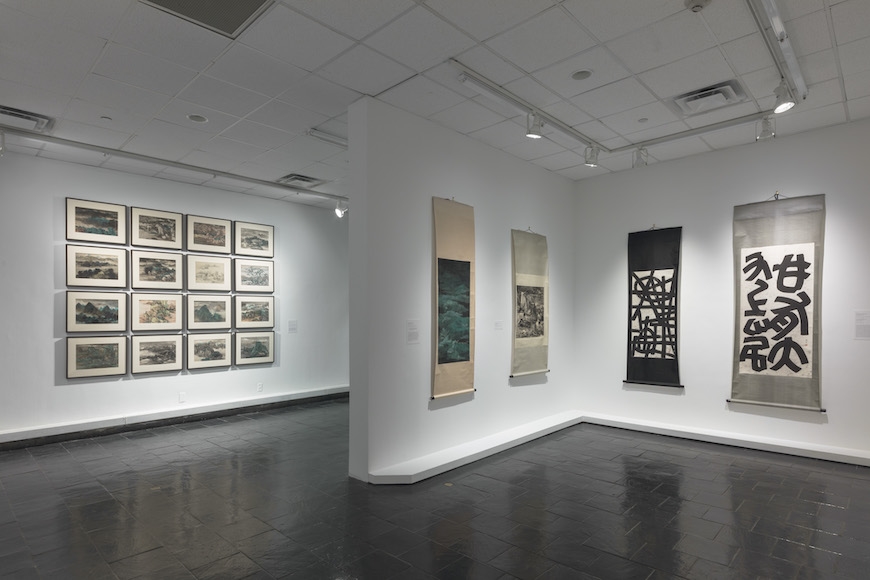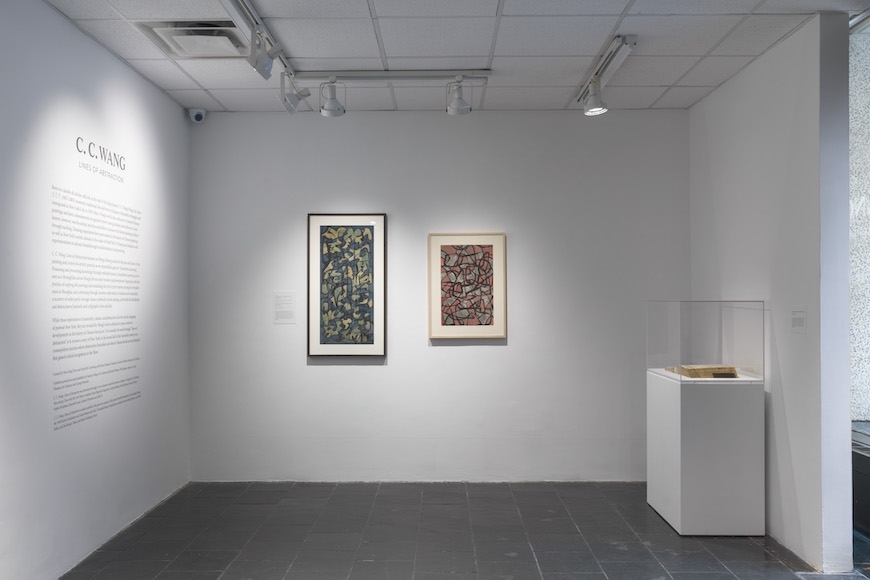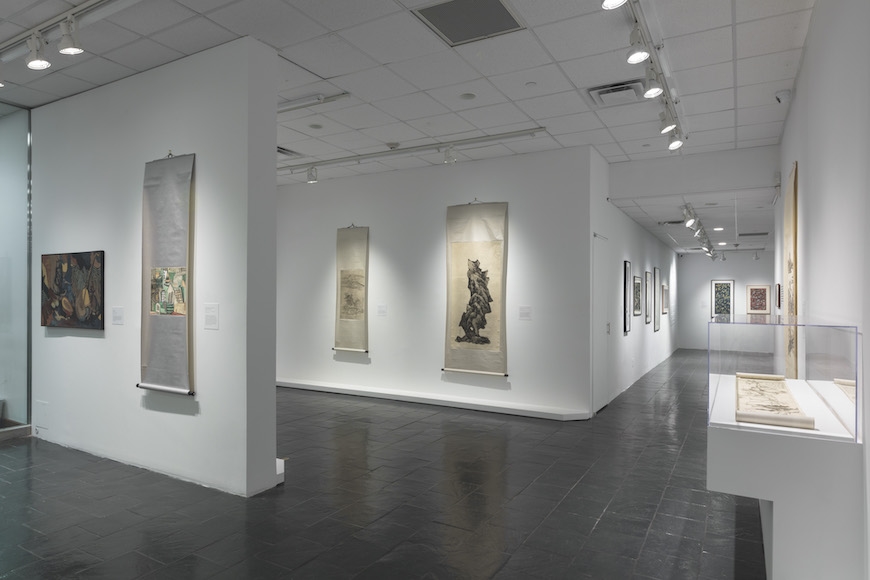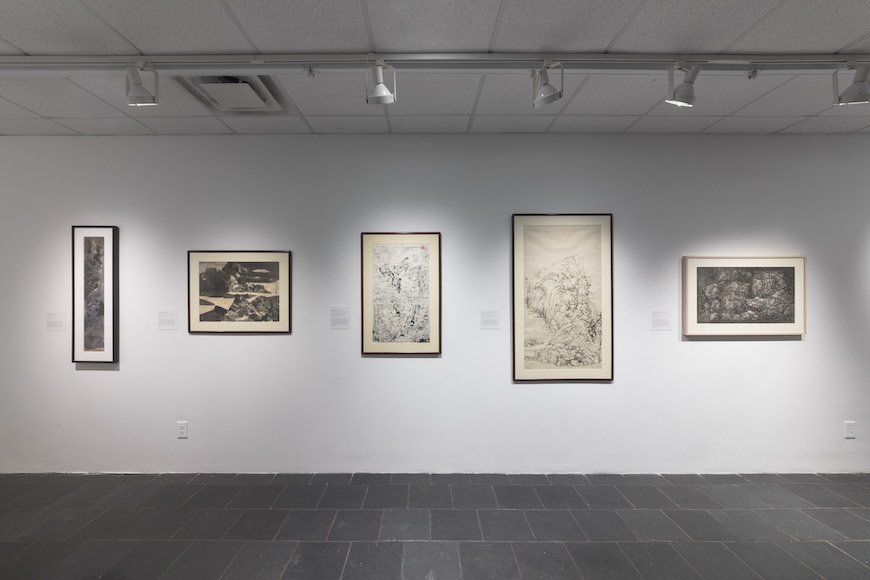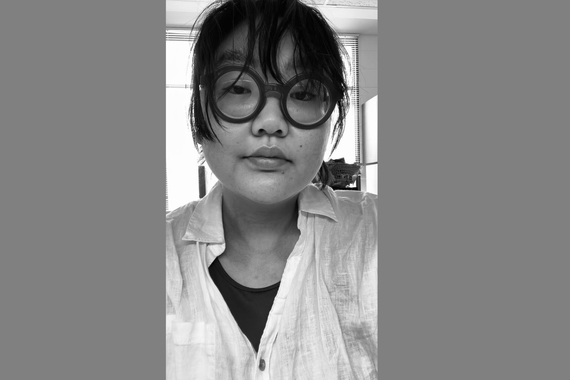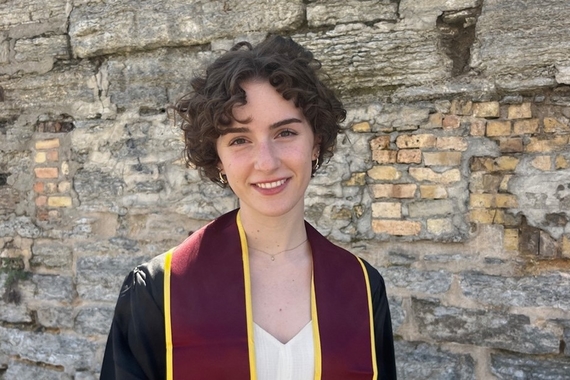A Multicultural Framework for American Art: Curating C.C. Wang
Picture American art. Does Chinese calligraphy come to mind?
It does for students of the 2022 museum practice course taught by Assistant Professor Daniel Greenberg. The course provided students with real-life museum experience as students reexamined the definition of American art through the legacy of the Chinese American artist C.C. Wang. In collaboration with the curatorial team at Hunter College, UMN students developed an exhibition called C.C. Wang: Lines of Abstraction, which examines how cultures influence each other in art.
Museum & Curatorial Studies Minor
Greenberg taught the museum practice course to support the department’s new museum and curatorial studies minor, which “invites students from diverse majors to engage in the study of museum history while gaining experience in the field.” The course introduces students to the many job opportunities available at museums, with guest lectures from professional curators, gallerists, and artists, as well as resources from the Weisman Art Museum.
Being a part of the curatorial team for C.C. Wang: Lines of Abstraction gave students a feel for museum work. They helped shape the themes of the exhibition, curate the art on display, and design the exhibition space with help and training from professionals on campus, including the curatorial team at the Weisman Art Museum. They met up with Associate Professor Wen-shing Chou at Hunter College—who teaches the graduate curatorial course for the Department of Art and Art History at Hunter—to incorporate their ideas into the exhibition, which ran from February 2 to April 29 in the Bertha and Karl Leubsdorf Gallery at Hunter College in New York City.
“Bringing an exhibition to life is the work of many hands,” Greenberg acknowledges. Together with their collaborators, students successfully put together a meaningful exhibit that will have an impact for years to come.
A Wider View of American Art
C.C. Wang: Lines of Abstraction showcases the art of Chinese American artist C.C. Wang (王己千, 1907–2003), who immigrated to New York City in 1949. The exhibition features a selection of the postwar abstraction pieces he created using his knowledge of traditional Chinese ink painting and influences from New York City’s art scene. These two art forms blend together to form Wang’s distinct multicultural style, telling a more complete story of American art.
“It was important for the exhibition to show how American scholars and institutions did not have the historical and cultural framework necessary to understand and value C.C. Wang's immigrant story during his lifetime,” Greenberg explains. “We aimed to show that Chinese-American art can tell a distinct and quintessentially American story, reshaping and broadening our understanding of ‘American’ art."
A Published Undergraduate
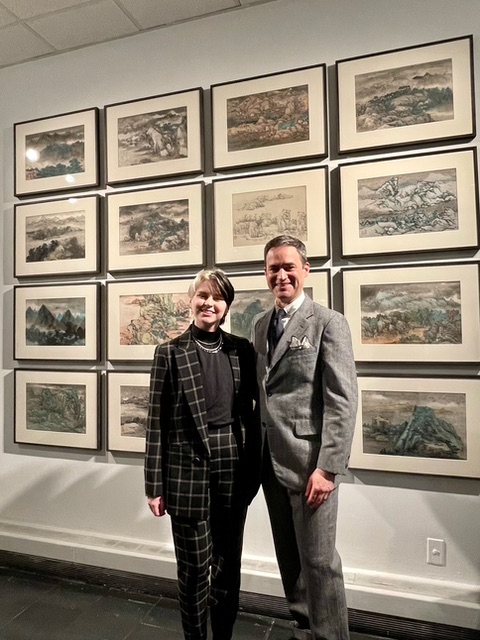
To go along with the exhibition, the Weisman Art Museum is sponsoring the C.C. Wang: Lines of Abstraction catalog, which goes into greater detail about the art pieces shown in the exhibition. The catalog features a collection of essays by various Chinese calligraphy curators and a student of C.C. Wang. Also featured in the catalog is an essay from alum Jordan Homstad (BFA ‘22, art and art history), who took the museum practice course last year, and was the only undergraduate to have their essay included in the catalog.
“Professor Greenberg mentioned that we could write papers which might have the opportunity to be published,” Homstad says. “We had to do our research and perform at a higher level than one might normally put into a final paper.”
Homstad’s essay explores the experimental aspects of Wang’s art style. It covers the vast history of Chinese calligraphy practices C.C. Wang built on to gain a full understanding of the techniques used, then analyzes how his postwar art differs from other traditional Chinese artists.
“I’m incredibly proud of Jordan’s work,” Greenberg comments. “They came to class without previous knowledge of Chinese art and were able to write an essay that will be published alongside established scholars in the field.”
The catalog is set to publish in August 2023, with essays by Greenberg, Homstad, and members of the curatorial team at Hunter.
“It feels kind of surreal now that it's happening soon, but it's also very exciting. I feel very honored to be able to publish a piece about an artist that I didn't know at the start of the class, but now sincerely and truly admire and find it extremely inspiring,” Homstad says.
Homstad is now pursuing their MFA at Parsons School of Design in New York City.
Many Ways to Work in Art
Greenberg is grateful that his class had the opportunity to be a part of the exhibition. Revisiting Wang’s art twenty years after the artist’s death gives the chance to study the impact of his work with greater understanding and nuance than in previous decades.
“I am honored that my students and I were part of this team,” Greenberg says. “I think that the beautiful exhibition and catalog clearly show the sustained, heartfelt efforts of all of us—students, professors, gallery staff, lenders, and institutional partners.”
In the coming years’, museum practice will be offered by the art history department as part of the museum and curatorial practice minor, which is for anyone interested working in a museum and provides many opportunities in the Twin Cities and beyond.
Learn more about the life and art of C.C. Wang in this review of the exhibition from Commonweal Media.
